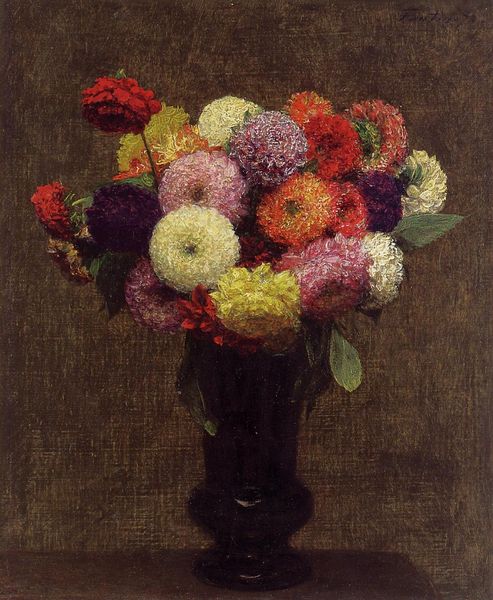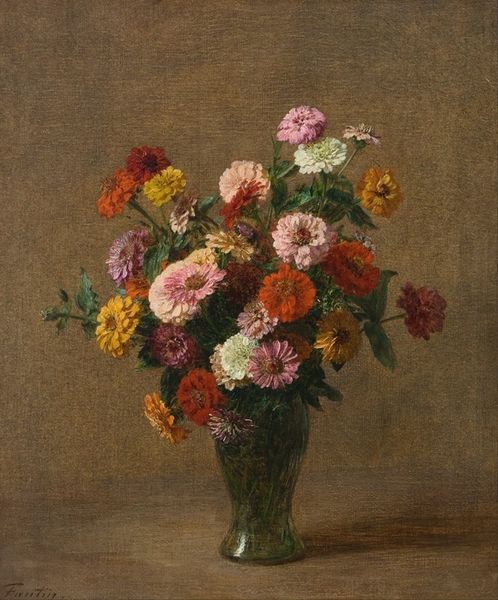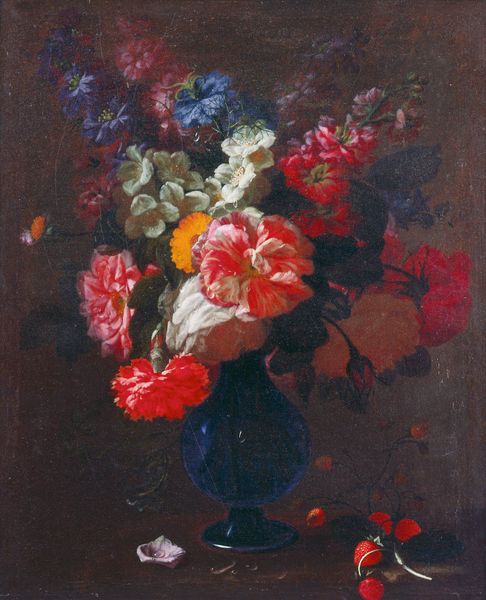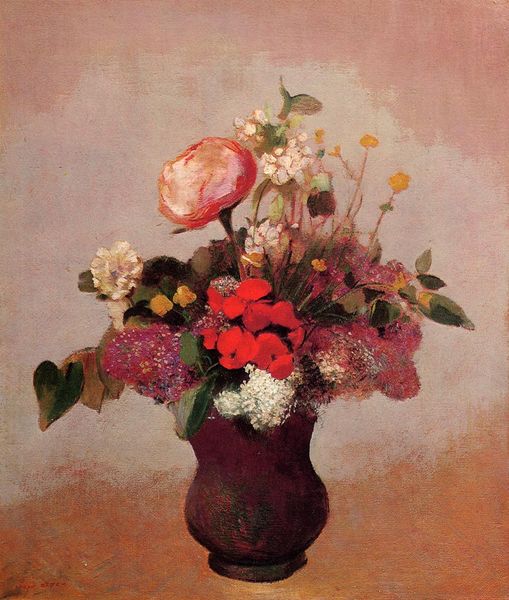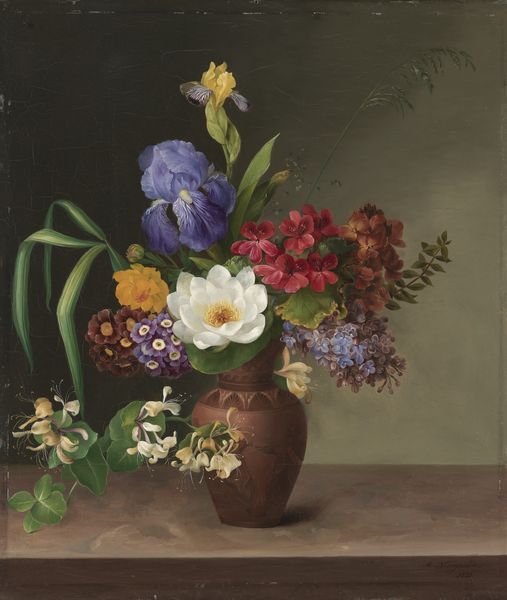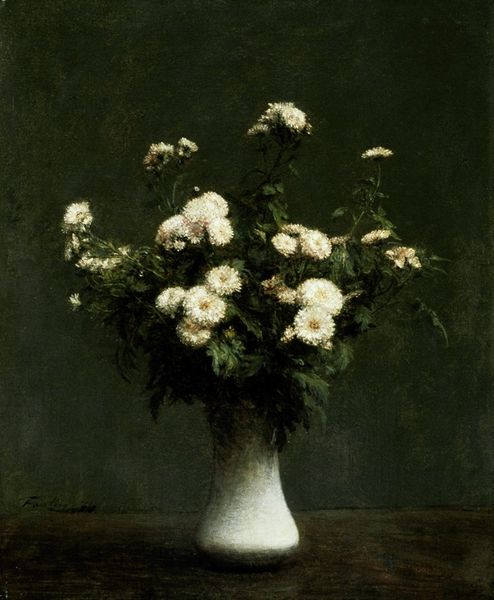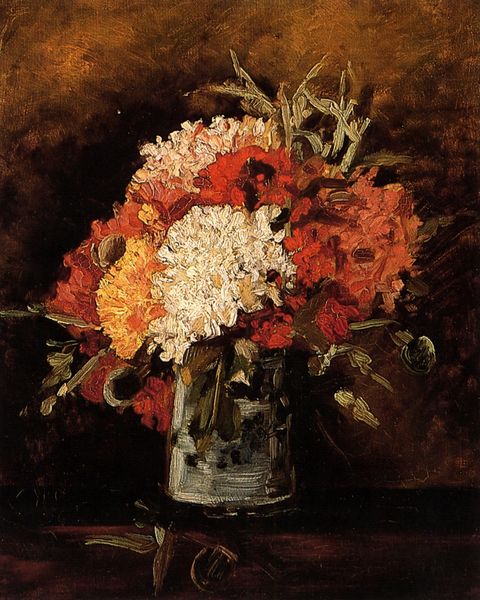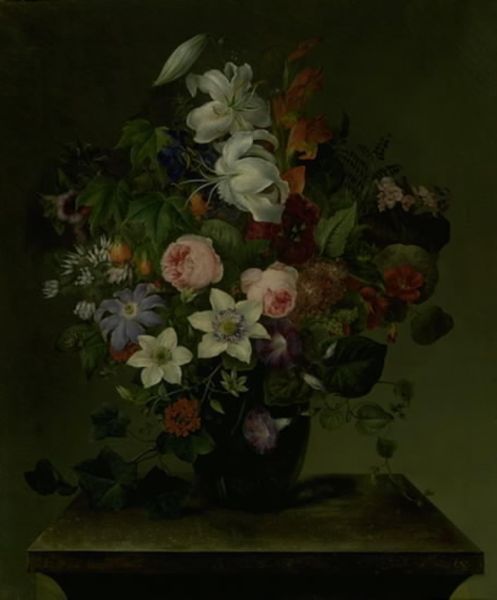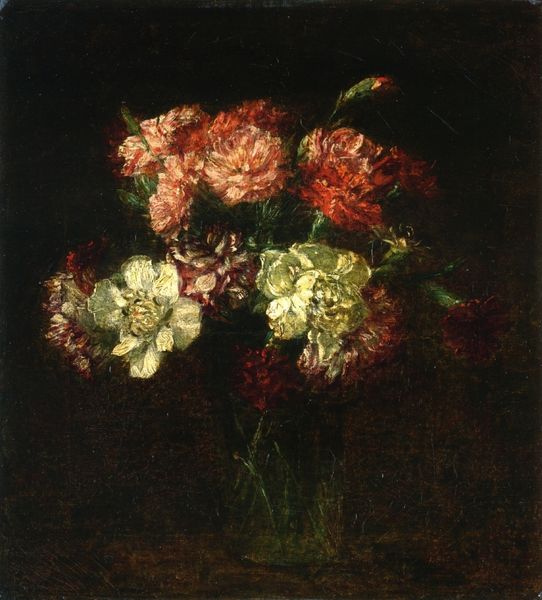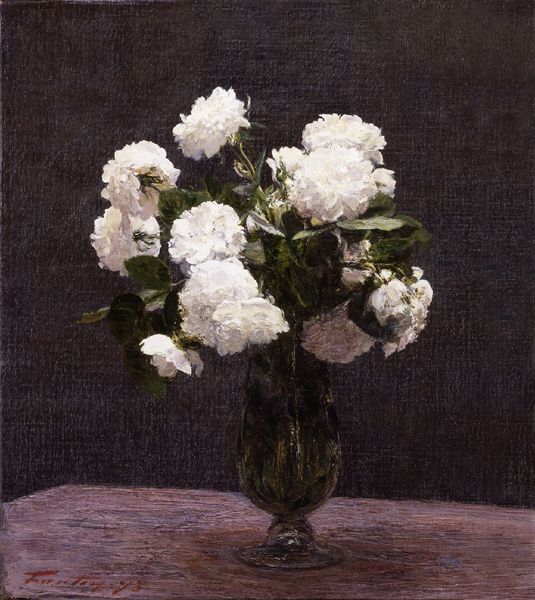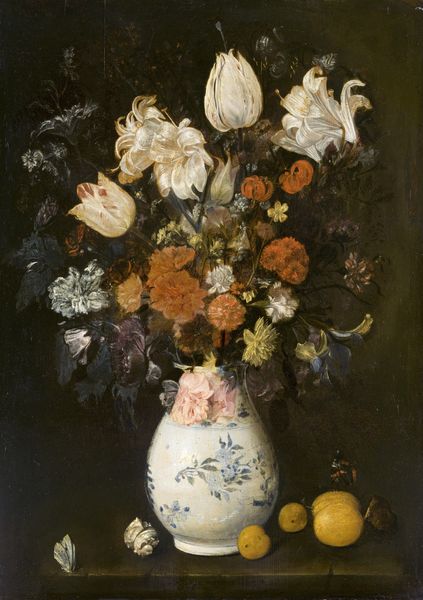
oil-paint, photography
#
still-life
#
gouache
#
impressionism
#
oil-paint
#
photography
#
oil painting
Dimensions: 44.5 x 37 cm
Copyright: Public domain
Curator: Before us is "Dahlias," an oil painting by Henri Fantin-Latour from 1872, currently held in a private collection. What are your initial impressions? Editor: It feels weighty. There’s a stillness, a sense of density both in the texture of the paint and the massing of the blooms themselves. It's a powerful, yet subdued presence. Curator: Indeed. Observe how Fantin-Latour deploys chiaroscuro to model the petals, giving each bloom a distinct three-dimensionality while uniting them in a pyramidal composition. Note, too, the nuanced transitions between light and shadow, a hallmark of academic painting melded with emerging Impressionist sensibilities. Editor: The flowers, though ostensibly the subject, are presented in this unglazed ceramic vase. It draws my attention to the means of display itself. It almost implies the daily rituals – who grew these flowers, who arranged them, and the setting in which someone might acquire and maintain these goods? These are vital aspects, far more important than pure aesthetics. Curator: Perhaps. However, it’s undeniable that the stark white vase provides a critical foil to the varied tonalities of the dahlias, allowing Fantin-Latour to explore color relationships in a contained, formal environment. The tactile impasto, particularly in the highlights, creates a dynamic surface. Editor: The visible brushwork, even in areas of shadow, conveys the physical act of painting, reminding us of the artist's labor, his hours of mixing paint and constructing the still life. It speaks of material reality underlying the scene presented. Curator: That said, Fantin-Latour’s command of visual language constructs an ordered pictorial space where line, form, and color operate harmoniously. We are in the presence of something quite special. Editor: It provides an entryway into understanding art and the role that materials, production and the economics of domestic lives had for painters in the late nineteenth century. A painter such as Fantin-Latour invites consideration of everyday artistic decisions that still speak volumes today.
Comments
No comments
Be the first to comment and join the conversation on the ultimate creative platform.
